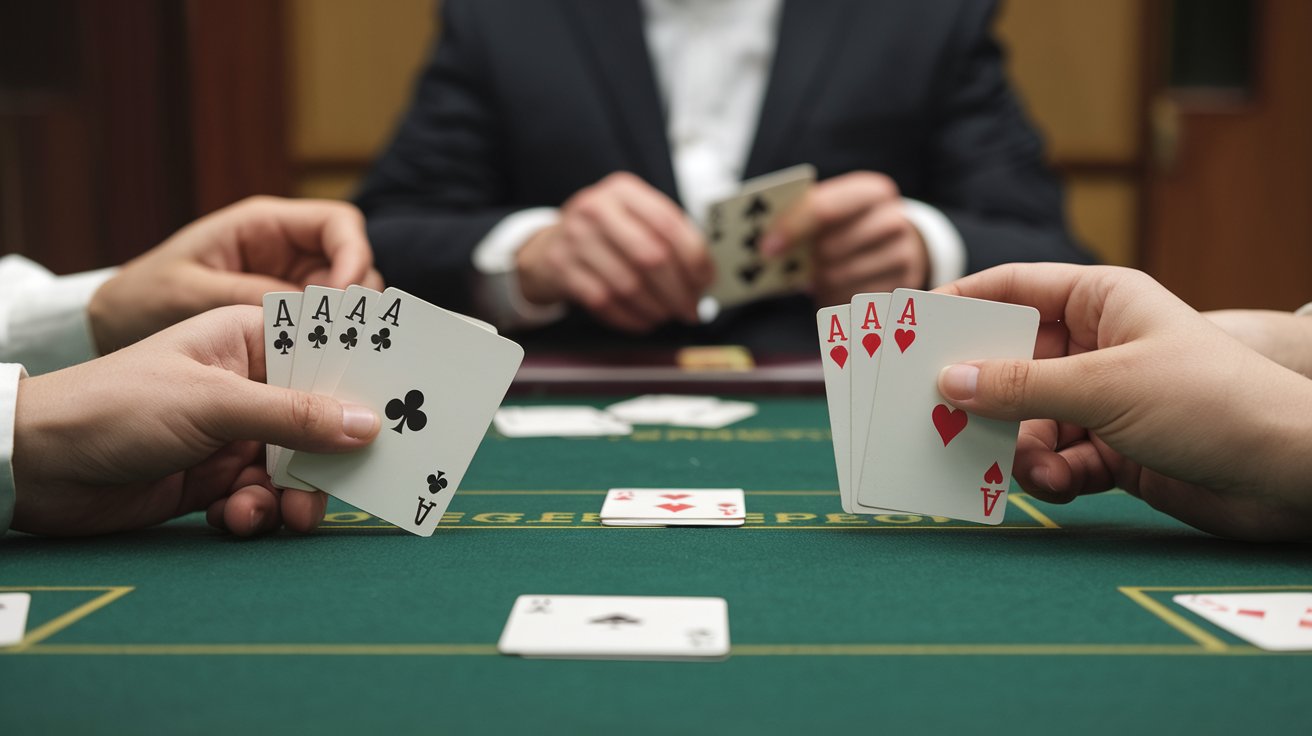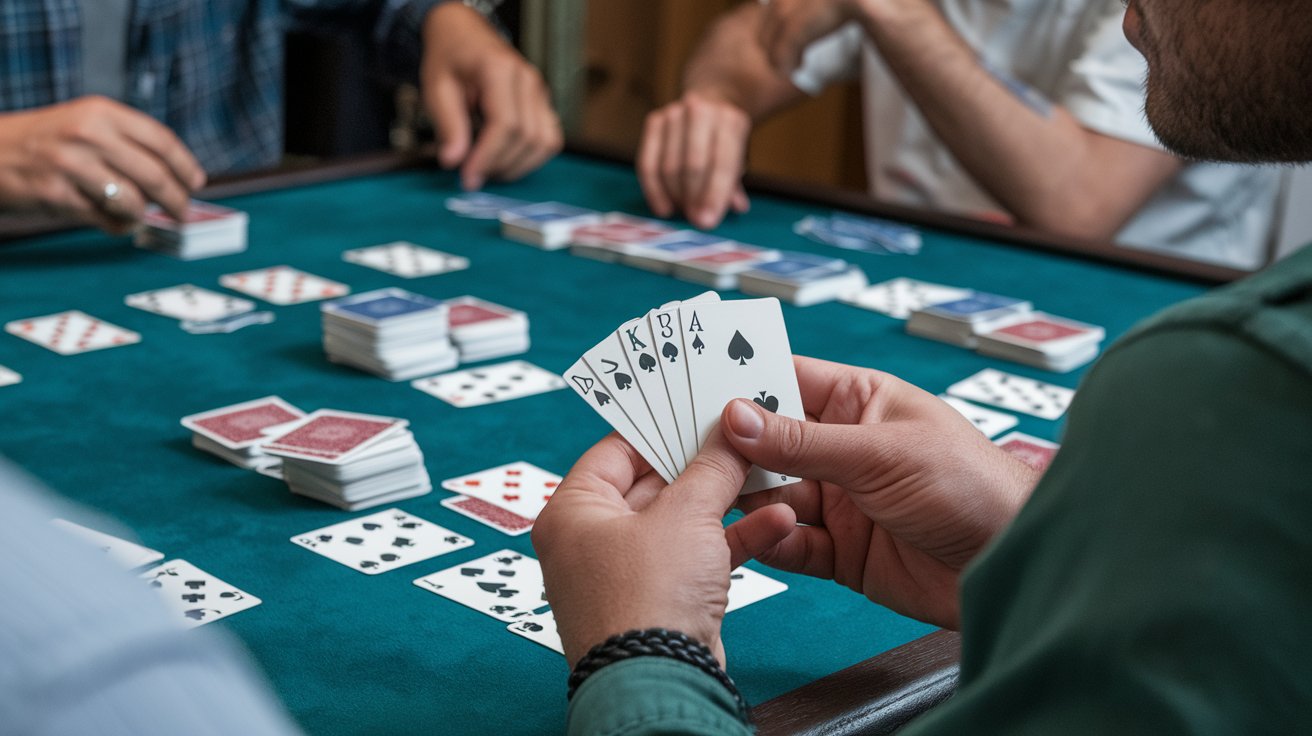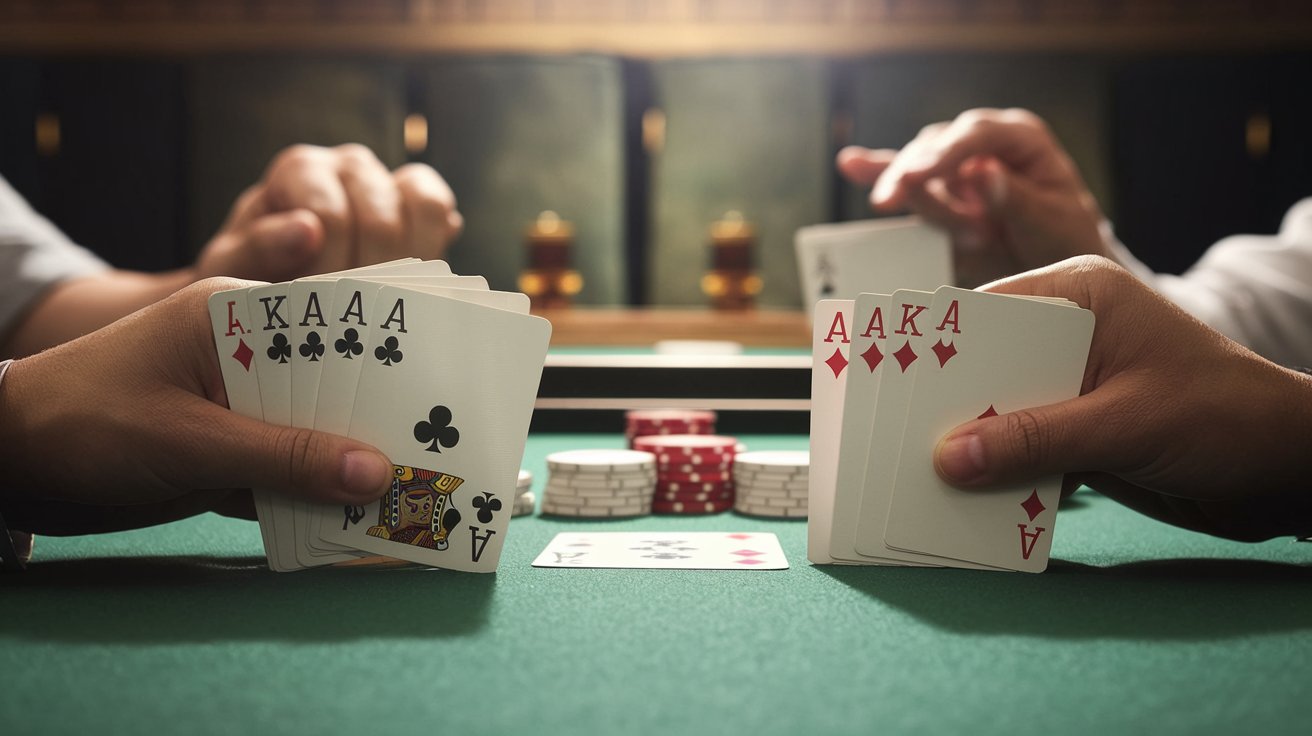Timing is everything in rummy. Whether you’re playing classic Gin Rummy, Indian Rummy, or any other variant, knowing exactly when to make your move can be the difference between victory and defeat. This strategic element often separates beginners from masters, as experienced players develop an intuitive sense of when to hold back and when to strike.
In this comprehensive guide, we’ll explore the critical role that timing plays in rummy strategy, providing you with actionable insights that can immediately elevate your game. From early game patience to late game aggression, understanding the rhythm of rummy will transform how you approach this beloved card game.
Table of Contents
- Understanding the Rhythm of Rummy
- Early Game Strategy: The Patience Phase
- Mid-Game Decisions: Reading the Table
- End Game Tactics: Striking at the Right Moment
- Opponent Behavior: Timing Based on Player Actions
- Card Counting and Probability: The Science of Timing
- When to Discard Valuable Cards
- The Psychology of Timing in Rummy
- Common Timing Mistakes to Avoid
- Practicing Your Timing: Drills and Exercises
Understanding the Rhythm of Rummy

Rummy isn’t just about the cards you hold—it’s about when you choose to play them. Each game has a natural progression that moves through distinct phases, and recognizing which phase you’re in allows you to make timing decisions that maximize your chances of success.
Think of a rummy game as having three key phases:
- Formation phase: Players are building their initial combinations
- Development phase: Players are refining their hands and watching opponents
- Closing phase: Players are racing to complete their sets and declare
Each phase requires different timing strategies, and the ability to recognize transitions between phases is crucial for maintaining an advantage. While beginners often play at a consistent pace throughout, masters adjust their tempo according to the game’s evolution.
Early Game Strategy: The Patience Phase
The opening moves in rummy set the foundation for your entire game. This is where timing discipline truly shines—rushing your strategy here can lead to costly mistakes.
When to Exercise Patience
During the early game, practice these timing principles:
- Delay showing your intentions: Avoid picking up cards from the discard pile that clearly signal your strategy.
- Wait to discard high-value cards: Keep your options open by holding onto face cards and aces until you have a clearer direction.
- Observe opponent patterns: Use the first few rounds to establish which suits and numbers opponents might be collecting.
Remember that the discard pile provides valuable information. When you pick from it early in the game, you telegraph your intentions to observant opponents. Instead, draw from the closed deck more frequently in the early game, revealing less about your hand.
One professional player puts it this way: “The first five rounds of rummy are for gathering intelligence, not showing your strength.”
Mid-Game Decisions: Reading the Table

As the game progresses into the middle phase, timing becomes more dynamic. This is when you should begin executing your strategy while remaining adaptable to changing circumstances.
Recognizing the Right Moments to Act
The mid-game offers several key timing opportunities:
- After an opponent signals confusion: When another player discards erratically or takes extra time on their turn, they’re often struggling—this is the perfect time to be more aggressive.
- When you’ve established two partial sets: Once you have two groups nearly complete, accelerate your pace to finish before opponents.
- When discard patterns shift: A sudden change in what’s being discarded often indicates players are nearing completion—adjust your timing accordingly.
During this phase, pay special attention to the tempo of discards. If cards you need start appearing in the discard pile, increase your drawing pace from this source. Conversely, if helpful cards disappear from circulation, it may be time to pivot your strategy.
End Game Tactics: Striking at the Right Moment
The final phase of rummy demands precise timing. As hands approach completion, the pressure intensifies, and split-second decisions become crucial.
Perfect Timing for Closing Moves
Consider these timing elements during the end game:
- The declaration window: Sometimes declaring with a slightly imperfect hand beats waiting for perfection, especially if opponents are close to finishing.
- The discard dilemma: Your final discards should reveal as little as possible—timing them to mislead opponents about your readiness to declare.
- The melding moment: When playing variants that allow partial melds, timing these revelations strategically can disrupt opponent planning.
An often-overlooked end game timing strategy involves deliberately slowing your pace when you’re one card away from winning. This can lull opponents into a false sense of security, preventing them from dropping high-value cards they might otherwise discard if they sensed immediate danger.
Opponent Behavior: Timing Based on Player Actions

Successful rummy players don’t just focus on their cards—they synchronize their timing with opponent behaviors.
Behavioral Cues and Timing Adjustments
Watch for these signals to adjust your timing:
- Hesitation before drawing: When an opponent pauses before drawing, they’re often deciding between strategies—this indicates uncertainty and a good time to be aggressive.
- Quick discards of high cards: This often signals an opponent nearing completion—accelerate your own strategy accordingly.
- Pattern breaks: When a player who has been consistently drawing from the deck suddenly takes from the discard pile, they’ve likely changed strategy—adjust your timing to counter this.
One particularly effective technique is to match your pace to the most successful player at the table. If they’re playing cautiously, there’s usually a good reason—mirroring their timing can help you benefit from their read of the game situation.
Card Counting and Probability: The Science of Timing
Effective timing in rummy has a mathematical foundation. By tracking which cards have been played, you can make informed decisions about when to make critical moves.
Probability-Based Timing Decisions
Consider these mathematical elements:
- Discard pile analysis: If you need a 7 of hearts and have seen two already, the probability of drawing the third is significantly lower—adjust your strategy timing accordingly.
- Card group saturation: When multiple players appear to be collecting the same suit or number group, accelerate your moves to collect cards from less contested groups.
- Calculating drop value: There’s a specific mathematical point where dropping out early minimizes losses—calculate this based on current hand value and round progression.
For serious players, developing a mental tracking system revolutionizes timing decisions. Something as simple as counting how many cards of each value have appeared can provide a remarkable advantage in knowing when to pursue specific combinations.
When to Discard Valuable Cards
One of the most challenging timing decisions in rummy involves knowing when to let go of potentially useful cards. This counterintuitive skill separates average players from experts.
Strategic Discard Timing
Consider these principles:
- The mid-game pivot: Around the game’s midpoint, discard any high-value cards that haven’t found matches—the risk of holding them outweighs the potential benefit.
- The sequence break: When deciding between keeping cards for a potential sequence or a set, timing matters—sequences are generally more valuable early, while sets become more important later.
- The blocking discard: Sometimes discarding a card you know an opponent needs is worth more than keeping it for yourself—but timing this move is crucial.
Expert players develop what’s called “discard discipline”—the ability to release potentially useful cards at precisely the right moment, neither too early (losing opportunities) nor too late (accumulating penalties).
The Psychology of Timing in Rummy
Rummy isn’t just mathematics and strategy—it’s a psychological contest where timing plays a crucial role in managing perceptions and manipulating opponents.
Psychological Timing Techniques
Master these psychological timing elements:
- Tempo variability: Alternating between quick and deliberative play creates uncertainty about your hand’s status.
- The false tell: Occasionally acting interested in cards you don’t need can manipulate opponent discards.
- The confidence signal: Picking quickly from the discard pile suggests confidence and can intimidate less experienced players into mistakes.
The rhythm of your play communicates information. Maintaining a consistent pace regardless of your hand’s quality conceals valuable information from opponents. Conversely, deliberately changing your pace can send false signals that induce opponents to make timing errors of their own.
Common Timing Mistakes to Avoid
Even experienced rummy players can fall into timing traps that undermine their success. Being aware of these common errors can significantly improve your results.
Timing Pitfalls to Recognize
Watch out for these mistakes:
- Premature aggression: Attempting to complete combinations too early often leads to inflexible strategies and missed opportunities.
- Declaration hesitation: Waiting too long for the “perfect hand” when you could declare earlier often results in another player declaring first.
- Predictable patterns: Establishing a consistent timing pattern makes your strategies transparent to observant opponents.
- Emotional timing shifts: Allowing frustration or excitement to change your timing decisions almost always leads to errors.
Perhaps the most common timing mistake is what experts call “commitment rigidity”—deciding too early on a specific combination goal and refusing to adjust timing when the cards aren’t cooperating. Flexibility in timing decisions is essential to adapting to the constantly changing rummy environment.
Practicing Your Timing: Drills and Exercises
Like any skill, rummy timing improves with deliberate practice. These exercises can help develop your sense of when to make critical moves.
Timing Development Activities
Try these practice techniques:
- The countdown drill: Play practice hands where you must declare within a specific number of turns—this forces efficiency in decision-making.
- Delayed gratification practice: Force yourself to wait three turns before picking from the discard pile, regardless of what appears—this builds patience.
- Tempo variation exercise: Deliberately play some practice hands very quickly and others very slowly to develop comfort with different paces.
- The observation game: Watch experienced players and focus exclusively on their timing decisions rather than the cards they play.
One particularly effective practice method involves recording your games (either physically noting move timing or using an app) and reviewing the timing patterns afterward. This retrospective analysis often reveals timing tendencies you weren’t aware of during play.
Conclusion: Mastering the Moments
Timing in rummy isn’t just about playing cards—it’s about orchestrating a strategy that unfolds at exactly the right pace. The masters of the game understand that knowing when to make each move is just as important as knowing which move to make.
By developing your sense of timing through the principles outlined in this guide, you’ll transform your rummy experience. You’ll start recognizing opportunities that previously passed unnoticed and avoiding traps that once seemed unavoidable.
Remember that timing mastery doesn’t happen overnight. It develops through attention, practice, and experience. But with each game you play with timing awareness, you’ll move closer to the intuitive sense of rhythm that defines truly exceptional rummy players.
The next time you sit down for a game, don’t just ask yourself what to play—ask when to play it. That simple shift in perspective might just be the key to unlocking your rummy potential.

Zareb Saleh is a journalist at Gulf Today and a ghostwriter for Gameoholic, specializing in gaming, technology, and digital culture. With a keen eye for industry trends, he delivers insightful stories that engage and inform readers.




